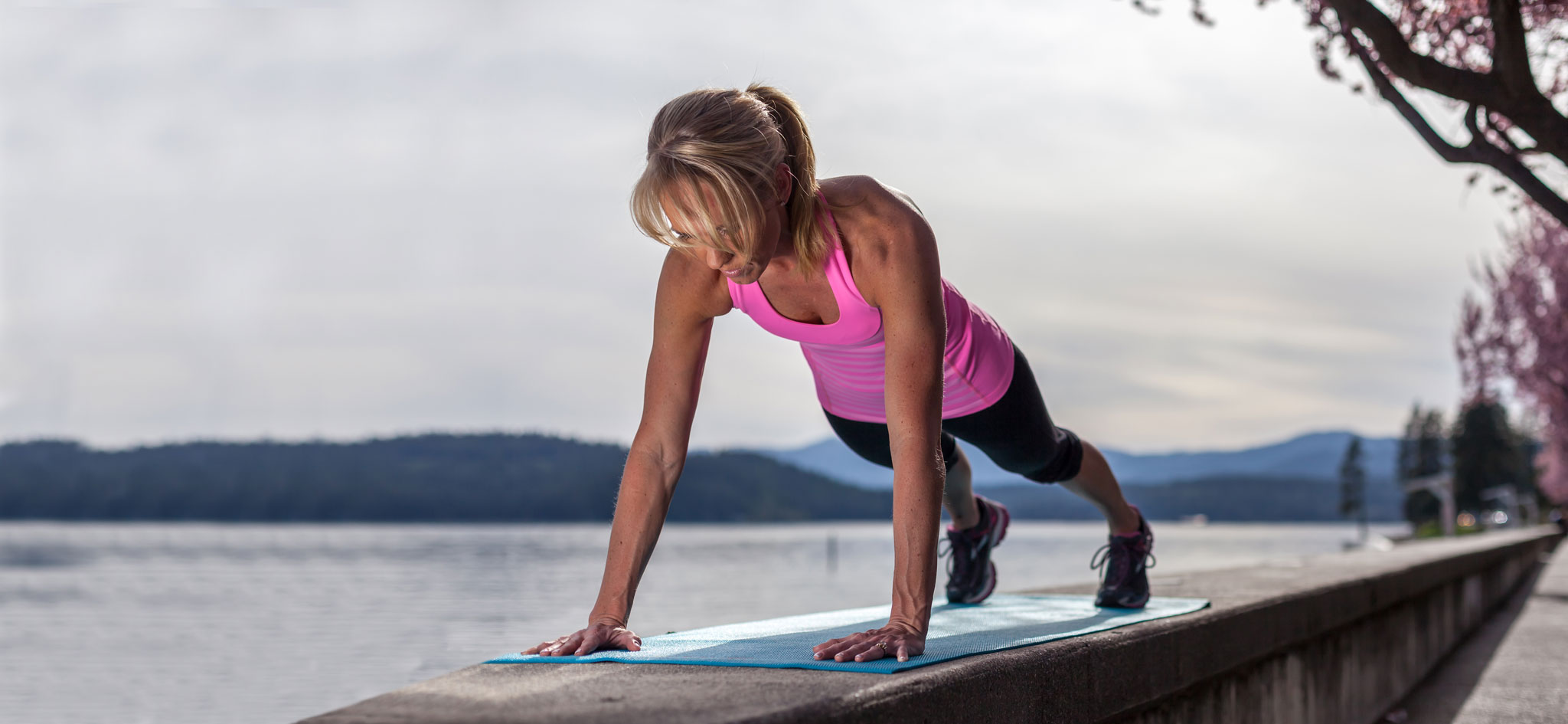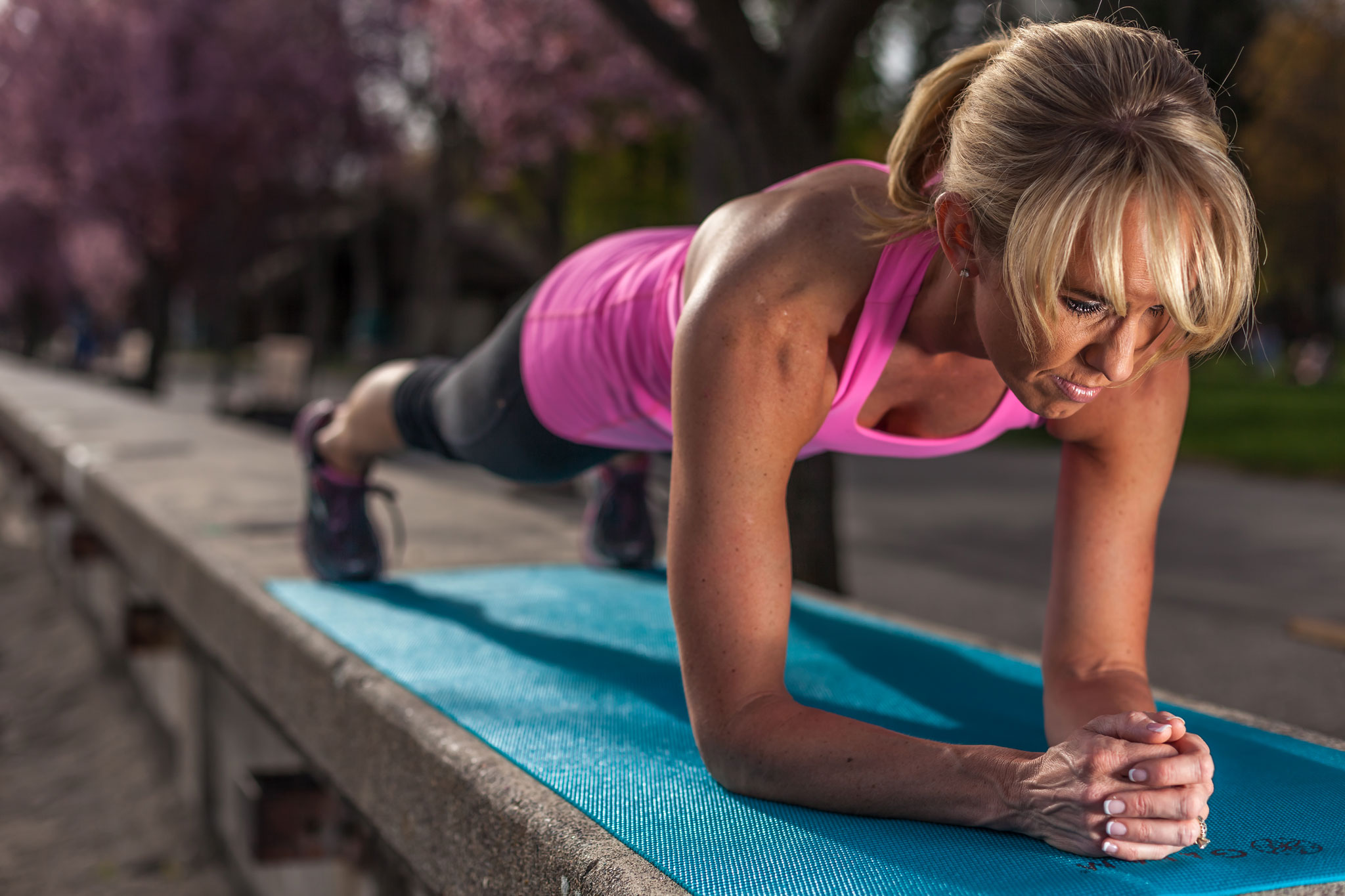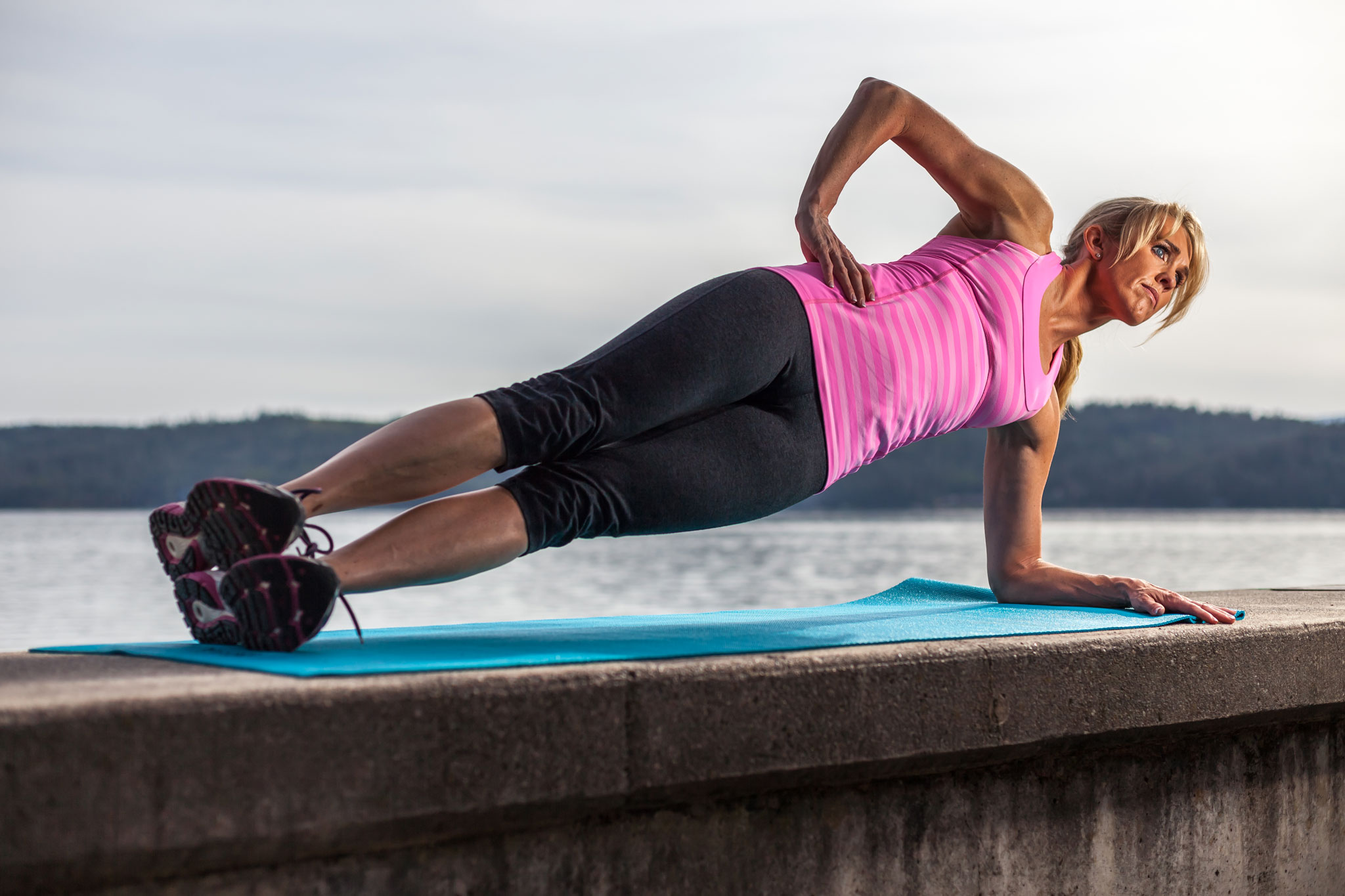Planking is a convenient exercise you can do anywhere. It builds full body strength, improves posture, and builds mental fortitude It’s easy to track your progress with the plank. Simply try holding the plank a little longer each time.

High Plank: Start in the pushup position with hands directly under your shoulders, finger pointing forwards, elbows pointing back. Squeeze the glutes. This places hips in the neutral position. Then tighten the abdominals to support and stabilize that position. Focus on pulling your belly button inward toward your spine while keeping your back and hips even/flat. Head stays in a neutral position, looking at the floor. Shoulders and back stay tight and strong, keeping shoulder blades apart. Hold this position as long as possible without losing proper form. (If this position is too difficult from your toes, modify it by planking from your knees)

Low Plank: From the pushup position, carefully lower yourself onto your forearms with your elbows directly below your shoulders. Gently curl your hands together. Keep glutes and abs tight, pulling belly button toward the spine. Head stays in a neutral position, as before, with shoulders and back tight and strong, keeping shoulder blades apart. Hold as long as possible without losing proper form. (Again, modify by planking from the knees)

Side Plank: Lying on your side, prop yourself up on one elbow, with elbow directly below the shoulder and forearm against the floor in front of you in a comfortable position. Squeeze the glutes, tighten the abdominals, and press your hips into a side plank position, where the spine is in perfect alignment. Shoulders stay tight and strong. Head stays neutral, looking straight out in front. You may rest your non-supporting hand on your hip, or extend your non-supporting arm vertically directly above you, palm facing forward. Hold as long as possible without losing proper form.
As Featured In: Summer/Fall 2014

